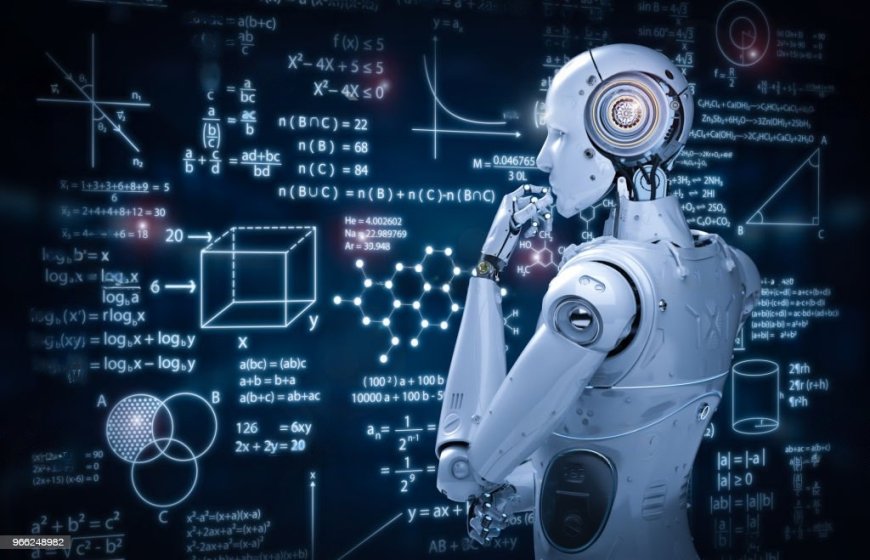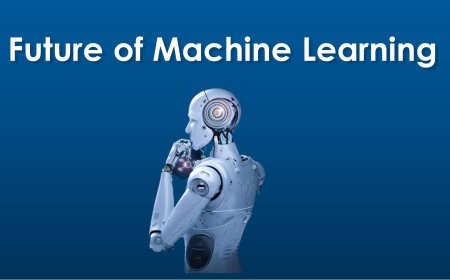Types of Machine Learning Algorithms
Discover various types of machine learning algorithms, including supervised learning, unsupervised learning, reinforcement learning, and more

Machine learning algorithms are the backbone of modern AI systems, enabling computers to learn from data and make informed decisions. These algorithms process data to uncover patterns, relationships, and insights, which can be applied to various applications such as image recognition, language translation, and medical diagnosis. They form the foundation of supervised learning, where algorithms learn from labeled data, as well as unsupervised learning, where algorithms discover hidden structures in unlabeled data. The diversity of machine learning algorithms caters to different problem domains, making them essential tools in today's data-driven world.
Importance of Machine Learning Algorithms
The importance of machine learning algorithms lies at the core of the entire field of machine learning. These algorithms are the building blocks that enable computers to learn from data and make predictions or decisions without being explicitly programmed. Here are some key points highlighting the significance of machine learning algorithms:
-
Automation and Efficiency: Machine learning algorithms automate complex and repetitive tasks that would be time-consuming or practically impossible for humans to perform. This leads to increased efficiency and productivity across various industries.
-
Data-Driven Insights: Machine learning algorithms extract meaningful patterns, trends, and insights from large and complex datasets. These insights can inform decision-making processes, identify opportunities, and drive innovation.
-
Personalization: Algorithms power personalized experiences by analyzing user behavior and preferences. This leads to tailored recommendations, such as in e-commerce, content delivery, and marketing.
-
Predictive Analytics: Machine learning algorithms make predictions based on historical data, enabling businesses to anticipate trends, customer behavior, market fluctuations, and more. This informs strategic planning and risk management.
-
Image and Speech Recognition: Algorithms like convolutional neural networks (CNNs) and recurrent neural networks (RNNs) enable accurate image and speech recognition. This has applications in facial recognition, medical imaging, autonomous vehicles, and accessibility technologies.
-
Natural Language Processing: Algorithms can understand and generate human language, enabling chatbots, language translation, sentiment analysis, and content summarization.
-
Fraud Detection: Machine learning algorithms detect unusual patterns and anomalies in data, helping to identify fraudulent transactions, cybersecurity threats, and abnormal behavior.
Supervised Learning Algorithms
Supervised learning is a fundamental branch of machine learning where the algorithm learns from labeled data, meaning the input features are paired with corresponding target labels. The goal is to build a model that can predict or infer the labels for new, unseen data based on patterns learned from the training data.
Regression Algorithms
-
Linear Regression: Linear regression aims to find the best-fitting straight line through the data points, predicting a continuous numerical output. It minimizes the difference between predicted and actual values using techniques like least squares.
-
Polynomial Regression: Extending linear regression, polynomial regression fits a polynomial function to the data, capturing more complex relationships between features and outputs.
-
Support Vector Regression (SVR): SVR constructs a hyperplane that maximizes the margin between the predicted values and a defined margin, aiming to predict continuous numeric values.
-
Decision Tree Regression: Decision trees split the feature space into segments to predict continuous outputs. At each split, the algorithm chooses the best feature to maximize homogeneity within segments.
Classification Algorithms
-
Despite the name, logistic regression is used for binary classification. It models the probability of an instance belonging to a certain class using a logistic function.
-
Based on Bayes' theorem, Naive Bayes assumes feature independence and calculates probabilities to classify instances into classes.
-
SVM finds a hyperplane that maximizes the margin between different classes, making it effective for both binary and multi-class classification.
-
Decision trees split the feature space based on the most discriminative features, creating a hierarchical structure to classify instances into classes.
-
A collection of decision trees, where each tree is trained on a random subset of data and features. The final prediction is an ensemble average of individual tree predictions.
-
KNN assigns a class to an instance based on the majority class of its k-nearest neighbors in the feature space.
-
Deep neural networks can handle complex relationships in data by utilizing multiple hidden layers. They excel in tasks with vast amounts of data and require careful architecture design.
Unsupervised Learning Algorithms
Unsupervised learning is a category of machine learning where the algorithm learns from unlabeled data, extracting patterns and relationships without explicit target labels. Unlike supervised learning, there are no predefined correct answers or target outputs. Unsupervised learning is particularly useful for exploring data structures and discovering inherent patterns that might not be readily apparent.
Clustering Algorithms
-
K-Means Clustering: K-Means is a widely used clustering algorithm that aims to partition data points into a set of distinct groups (clusters) based on their similarity. It works iteratively by assigning each data point to the nearest cluster centroid and then updating centroids based on the mean of the assigned points. K-Means is simple and efficient but assumes clusters are spherical and equally sized.
-
Hierarchical Clustering: Hierarchical clustering builds a tree-like structure of nested clusters by either agglomerative (bottom-up) or divisive (top-down) approaches. It doesn't require a predefined number of clusters and captures hierarchical relationships between data points. Agglomerative hierarchical clustering starts with individual points as clusters and merges them progressively, while divisive clustering starts with the entire dataset and splits it recursively.
-
DBSCAN (Density-Based Spatial Clustering of Applications with Noise): DBSCAN identifies clusters as dense regions separated by sparser areas in data space. It doesn't assume spherical clusters and can handle noise points. It defines clusters as areas where data points are sufficiently close to each other, while points in low-density regions are considered outliers.
Dimensionality Reduction Algorithms
-
Principal Component Analysis (PCA): PCA is a technique used to reduce the number of dimensions in a dataset while retaining as much of its variance as possible. It achieves this by finding orthogonal axes (principal components) along which the data varies the most. PCA is often used for visualization, noise reduction, and speeding up subsequent computations.
-
t-Distributed Stochastic Neighbor Embedding (t-SNE): t-SNE is a dimensionality reduction technique particularly useful for visualizing high-dimensional data in lower-dimensional space. It aims to preserve pairwise similarities between data points, making it effective for revealing complex relationships and clusters within the data.
-
Autoencoders: Autoencoders are neural network-based models used for unsupervised learning and dimensionality reduction. They consist of an encoder that compresses input data into a lower-dimensional representation (latent space) and a decoder that reconstructs the original data from the compressed representation. Autoencoders can capture meaningful features and reduce noise in the data.
Semi-Supervised and Self-Supervised Learning Algorithms
Semi-Supervised Learning Overview
Semi-supervised learning is a paradigm that leverages both labeled and unlabeled data for training. While labeled data is limited and expensive to obtain, unlabeled data is abundant. Semi-supervised algorithms aim to improve model performance by using the additional information present in unlabeled data. By exploiting the underlying structure in the data, these algorithms can enhance the model's generalization and accuracy.
Self-Supervised Learning Overview
Self-supervised learning is a technique where a model learns from its own generated supervisory signals rather than relying on external labels. It involves creating surrogate tasks that generate pseudo-labels from the input data. The model learns to predict missing parts of data or transformations applied to the data, effectively learning rich representations that can be transferred to downstream tasks. Self-supervised learning is particularly valuable when labeled data is scarce.
Reinforcement Learning Algorithms
Reinforcement Learning (RL) is a machine learning paradigm where an agent learns to make sequential decisions by interacting with an environment. The agent aims to maximize a cumulative reward over time by taking actions that lead to favorable outcomes.
-
Markov Decision Processes (MDPs): MDPs provide a formal framework for modeling RL problems. They consist of states, actions, transition probabilities, rewards, and a policy. The Markov property assumes that the future depends only on the present state, making MDPs suitable for modeling dynamic decision-making scenarios.
-
Q-Learning: Q-Learning is a model-free RL algorithm that learns an action-value function (Q-function) to estimate the expected cumulative reward of taking a specific action in a given state. It iteratively updates Q-values using the Bellman equation and gradually converges to an optimal policy.
Deep Reinforcement Learning
-
Deep Q Networks (DQN): DQN combines Q-Learning with deep neural networks to handle high-dimensional state spaces. It uses experience replay to stabilize learning by storing and sampling past experiences.
-
Proximal Policy Optimization (PPO): PPO is a policy optimization algorithm that aims to update the policy while ensuring only modest changes to prevent large policy deviations. It strikes a balance between policy improvement and stability.
-
Actor-Critic Algorithms: Actor-Critic methods utilize two components: an actor that selects actions based on the policy and a critic that estimates value functions to evaluate the actor's performance. This combination enhances learning efficiency.
Reinforcement learning algorithms enable agents to learn from their interactions with the environment, making them suitable for tasks where decisions influence outcomes over time.
Transfer Learning and Pre-trained Models
Transfer learning is a powerful technique in machine learning where knowledge gained from solving one problem is applied to a related but different problem. Pre-trained models are neural networks trained on massive datasets for tasks like image recognition or language understanding. These models learn general features that can be fine-tuned for specific tasks with limited data. This approach accelerates model development and enhances performance, particularly when data availability is constrained. Fine-tuning pre-trained models has become a cornerstone in modern machine learning pipelines, revolutionizing fields like computer vision and natural language processing.
Generative Adversarial Networks (GANs)
Generative Adversarial Networks (GANs) are a class of deep learning models that revolutionized the field of generative modeling. GANs consist of two neural networks: a generator and a discriminator, trained simultaneously in a competitive manner. The generator learns to produce data, such as images or text, that is indistinguishable from real data, while the discriminator learns to differentiate between real and generated data. Through iterative training, GANs achieve a balance where the generator produces increasingly realistic outputs, challenging the discriminator to improve its ability to discern real from fake. GANs have found applications in image synthesis, style transfer, super-resolution, and more, significantly advancing the capabilities of generative AI.
Time Series Analysis and Forecasting Algorithms
Time Series Analysis and Forecasting Algorithms involve the study of data points collected over successive time intervals to uncover patterns, trends, and make predictions about future values. These algorithms play a critical role in various domains like finance, economics, and weather prediction. Methods such as Moving Average, Exponential Smoothing, and ARIMA (AutoRegressive Integrated Moving Average) are used to model and analyze time series data. More advanced approaches include Seasonal Decomposition, State Space Models, and machine learning techniques like Long Short-Term Memory (LSTM) networks for capturing complex temporal dependencies. Time series forecasting algorithms enable decision-makers to anticipate future trends and make informed choices based on historical data patterns.
Machine learning algorithms encompass a diverse array of techniques that cater to distinct problem-solving needs. From supervised and unsupervised learning to reinforcement learning, neural networks, and more, each category holds its own strengths and limitations. Selecting the appropriate algorithm for a given task is crucial as it directly impacts performance and results. A well-informed choice can lead to enhanced accuracy, efficiency, and insights. As the field of machine learning continues to advance, understanding these algorithms' nuances becomes increasingly vital for harnessing the full potential of artificial intelligence in various domains.











































